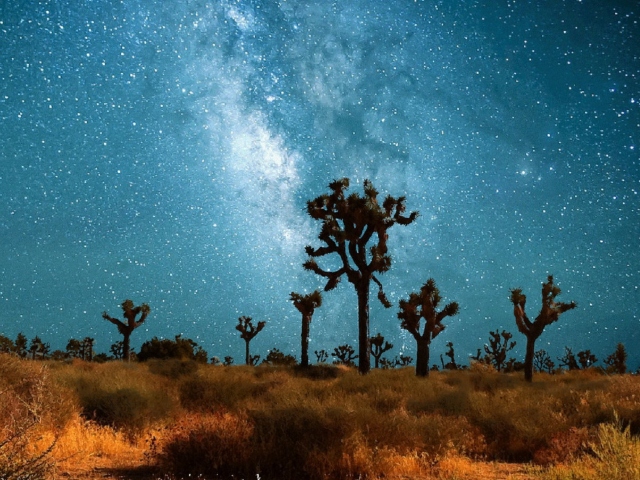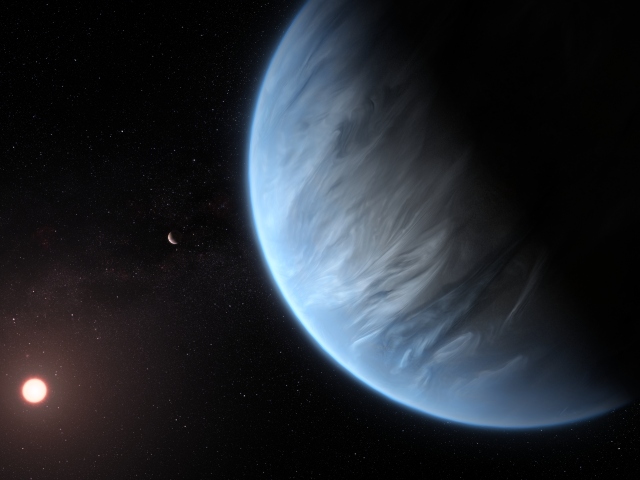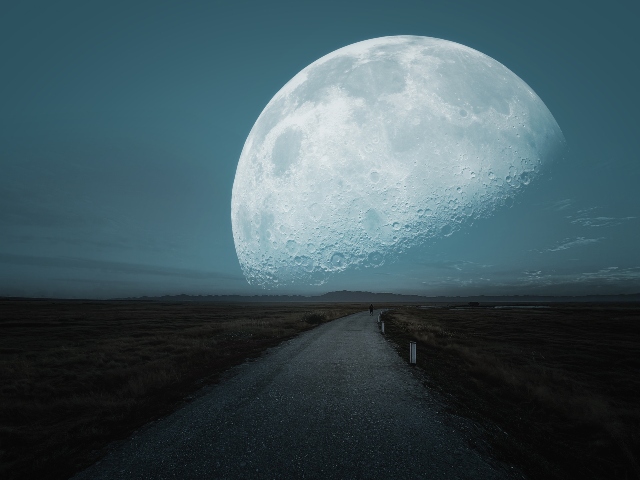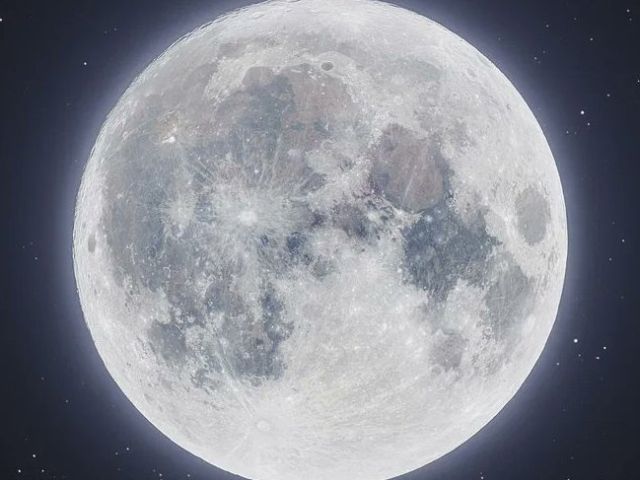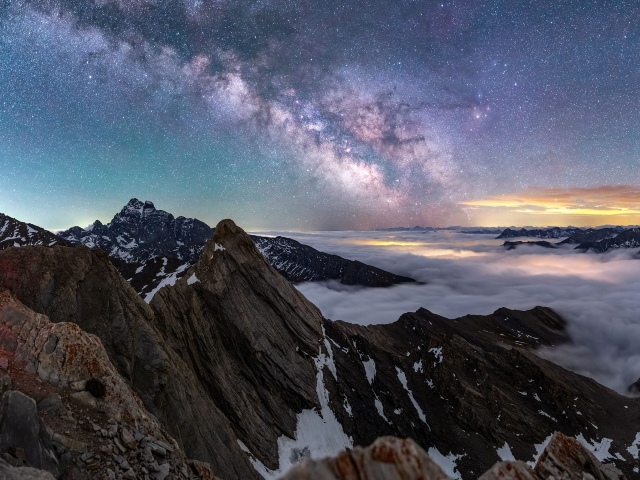
-
Astronomy
-
Cape Town Will Host A Global Astronomy Gathering Next Month
12 Jul 2024 by Heinrich / No Comments
Like a Woodstock for star nerds, over 2,000 international astronomers will descend on Cape Town for the first global astronomy gathering on African soil.
-
James Webb Space Telescope Finds Tentative Evidence Of ‘Signs Of Life’ On Faraway Planet
13 Sep 2023 by Heinrich / No Comments
NASA has indicated that the James Webb Space Telescope may have detected a molecule in the atmosphere of a distant exoplanet, which on Earth is only produced by life.
-
Study Shows The Moon Is Drifting Away From Earth, Making Our Days Longer
08 Sep 2023 by Heinrich / No Comments
we don’t have to be too concerned with the change yet, but at some point Bar-One will have to put out ads that claim their choccies give you energy for a 26-hour day.
-
ICYMI: Here’s That Rare Blue Supermoon That Lit Up The Night Sky [Images]
31 Aug 2023 by Maya-Rose Torrao / No Comments
At a time when the internet is littered with AI-created images that are hard to tell apart from the real deal, it’s clear that no one does it better than Mother Nature.
-
Twice In A Blue Moon: Rare Supermoons Light Up The Sky This Month[Video]
02 Aug 2023 by Maya-Rose Torrao / No Comments
Last night the sky was adorned with a ‘Sturgeon Moon’ supermoon, which was visible across the world including South Africa. This is just the beginning: we can expect another one on 30 August to end off the month’s sky-show.
-
Delve Into The Stellar Shortlists Of The Astronomy Photographer Of The Year Awards [Images]
29 Jun 2023 by Tayla / No Comments
It’s pretty cool to see astronomy pros and hobbyists alike share some of their incredible shots of the pretty things up top in the Astronomy Photographer of the Year awards.
-
Neptune’s Ring Has Never Been Seen In Such Detail Before
22 Sep 2022 by Tayla / No Comments
We’ve only ever seen this icy giant in great detail when NASA’s Voyager 2 became the first and only space probe to fly past it for just a few hours in 1989.
-
James Webb Space Telescope Nails The Phantom Galaxy
30 Aug 2022 by Tayla / No Comments
The remarkable gold-plated, infrared eyes have been capturing far-flung galaxies as well as shedding light on a bevvy of scientific questions and concerns.
-
It’s Impossible Not To Feel Tiny While Zooming In On The Cartwheel Galaxy [Video]
16 Aug 2022 by Tayla / No Comments
While seeing the Cartwheel Galaxy in such clear light is impressive, a new video released by the European Space Agency shows just how incredibly far away it actually is.
-
James Webb Space Telescope Sheds New Light On Incredible Cartwheel Galaxy [Images]
03 Aug 2022 by Tayla / No Comments
JWST has peered into deep space again with its infrared gaze and discovered the “stellar gymnastics in The Cartwheel Galaxy”.
-
Power Of The James Webb Space Telescope Summed Up In A Single GIF
27 Jul 2022 by Tayla / No Comments
The JWST views light in the infrared spectrum – on Earth, we can feel infrared light as heat – which allows the instrument to see far, far more of the universe.
-
Astronomers Pinpoint Incredible Discoveries Via James Webb Space Telescope [Images]
21 Jul 2022 by Tayla / No Comments
Sifting through the public James Webb Space Telescope datasets, stargazers across the planet have been hard at work.
-
Latest Round Of Incredible Images From James Webb Space Telescope
13 Jul 2022 by Tayla / No Comments
The first image was shown to the world on Monday, but little did we know that NASA would be releasing other amazing photos from the first batch throughout yesterday.
-
Here It Is: First Image From $10 Billion James Webb Space Telescope
12 Jul 2022 by Tayla / No Comments
The James Webb Space Telescope shows us a version of the universe that is chock-a-block with galaxies, some ranging back to an unimaginable time.
-
Chinese Scientists Reckon They Might Have Found A Sign Of Extraterrestrial Life
15 Jun 2022 by Tayla / No Comments
China’s massive ‘Sky Eye’ FAST telescope, the world’s largest alien-hunting radio telescope, seems to have picked up a strange signal which could suggest that there is indeed life beyond Earth.
-
Astronomers Are Frothing Over SA’s MeerKAT Telescope Images
04 Feb 2022 by Jasmine Stone / No Comments
We may never know exactly what’s cracking up there in the great beyond, but thanks to the MeerKAT telescope we are a little closer to finding out.
-
A Hypothetical Ninth Planet Might Just Upend The Solar System As We Know It
17 Nov 2021 by Tayla / No Comments
Possible evidence of a ninth planet in our Solar System seems more likely than ever according to a British astronomer.
-
Stunning Shots From The Astronomy Photo Awards
22 Sep 2021 by Tayla / No Comments
The competition has been running for 13 years out of The Royal Observatory Greenwich, with more than 4 500 entries this year.
-
A South African Telescope Just Discovered 20 New Galaxies
07 Jul 2021 by Tayla / No Comments
South Africa’s MeerKAT telescope has been hard at work uncovering a large galaxy group, which is likely the most neutral hydrogen gas-rich group ever discovered.
-
How Can These Astronomy Photo Award Finalists Even Be Real?
02 Jul 2021 by Tayla / No Comments
The shortlisted photographs in The Royal Observatory Greenwich’s 13th Astronomy Photographer of the Year competition are so beautiful that it’s hard to believe they’re real.
-
Largest Comet Ever Seen Is Headed Towards The Sun
29 Jun 2021 by Tayla / No Comments
The colossal Bernardinelli-Bernstein comet was first spotted in 2014, and has now made its way another billion kilometres closer to Earth.
-
Astronomers Made This Beautiful Star Creation Video
20 May 2021 by Tayla / No Comments
The “Star Formation in Gaseous Environments” project has released a video of the most beautiful, realistic, and highest resolution simulation of a star being born.
-
Astronomers Found Hundreds Of Tiny Worlds Hiding In The Solar System
17 Mar 2020 by Maya-Rose Torrao / No Comments
Just when you thought that the vastness of space couldn’t get more awe-inspiring, astronomers found more worlds on the edges of the solar system.
-
Moby Was Right – We Are All Made Of Stars
28 Jul 2017 by Sloane Hunter / No Comments
To all those who have gleefully claimed we are all made of stars, so that must mean we are all connected (#RainbowNation), here’s some science for you.
-
This Picture Won The Astronomy Photographer Of The Year Competition
19 Sep 2016 by Jasmine Stone / No Comments
It takes something rather impressive to woo the judges of this competition, but Chinese photographer Yu Jun seems to have done just that.
-
Some Of The Breathtaking Images From The 2012 Astronomy Photographer Of The Year Competition [PICS]
24 Aug 2012 by Jasmine Stone / No Comments
Space, the final frontier, and mankind’s constant fascination. These mesmerising images, from the Astronomy Photographer of the Year Competition, capture the night sky in ways that the naked eye never could and will leave you staring at the night sky wishing for an alien abduction.
-
Is It A Bird? Is It A Plane? No, It’s A Trillion Tonnes Of Comet
19 Oct 2011 by Jasmine Stone / No Comments
In a rare intersection of Science #FAIL and “Crap, that was close!”, scientists have re-analysed the findings of Mexican astronomer, José Bonilla, who, in 1883, spotted over 450 fuzzy looking objects passing in front of the sun. Turns out it was a trillion tonnes of comet debris!
-
THE HARTLEY 2 COMET – EMBELLISHING THE OCTOBER SKY
22 Sep 2010 by Jasmine Stone / No Comments
The Hartley 2 Comet’s Whistle Stop Tour Itinerary The periodically visible Hartley 2 Comet will make its best appearance since its discovery over Cape Town skies from late September through to early November. Please, enjoy this simple explanation from the Astronomical Society of Southern Africa.
-

